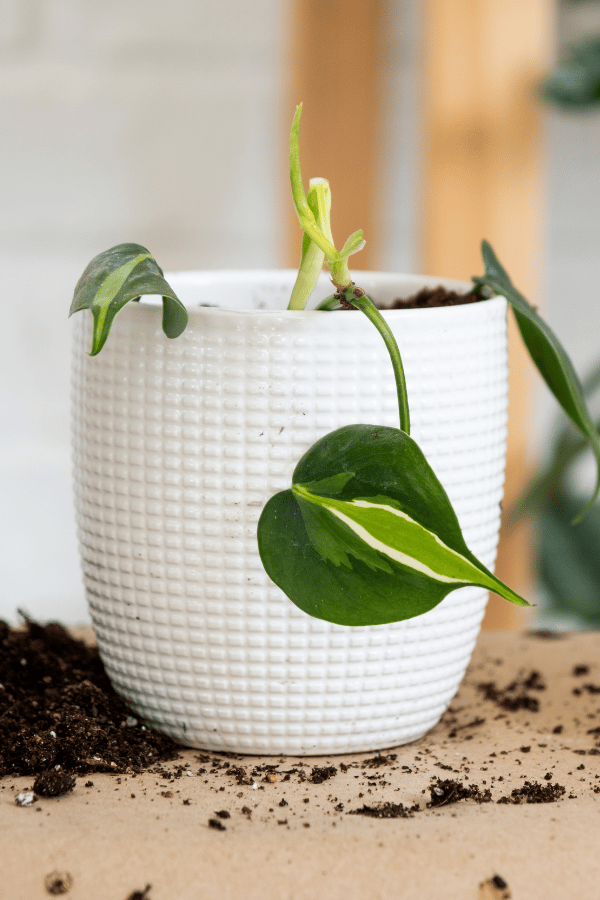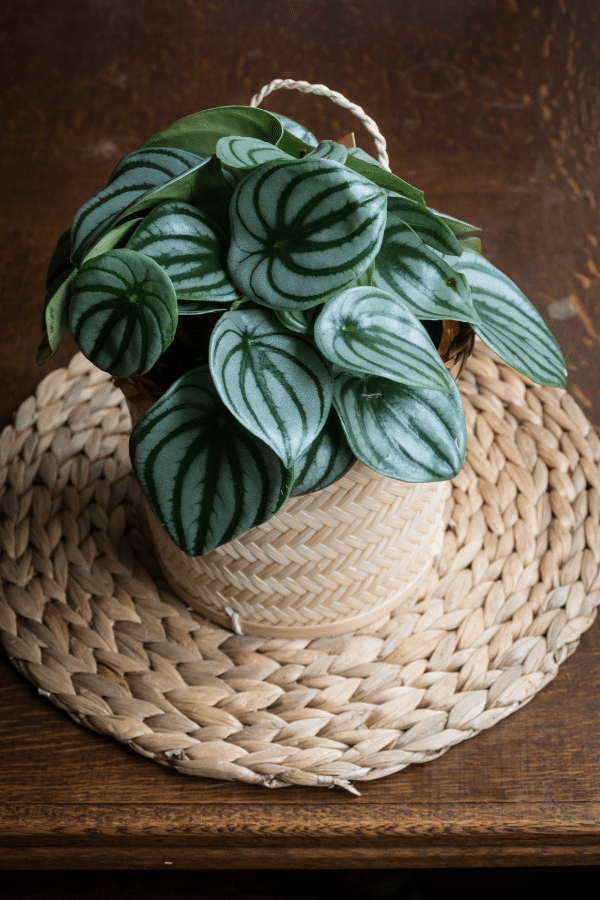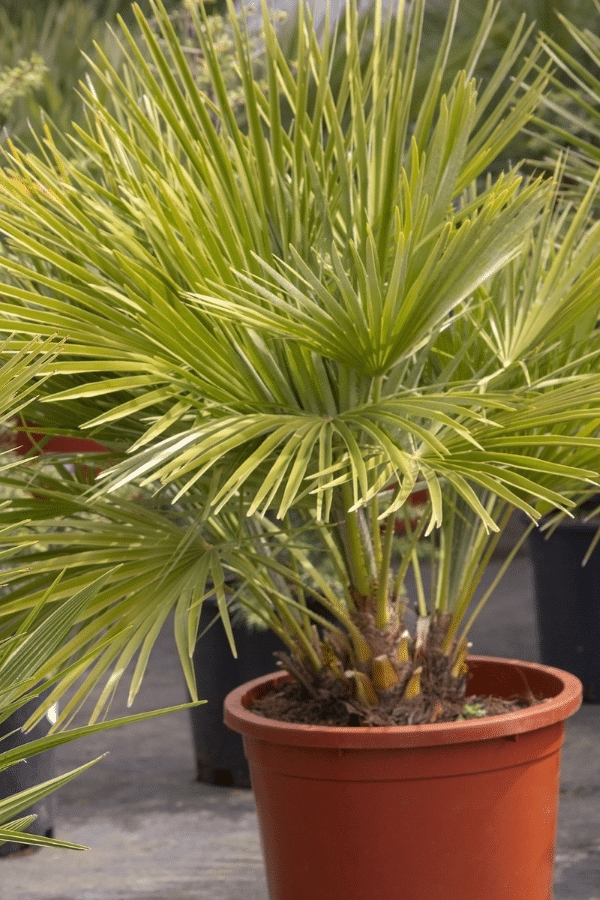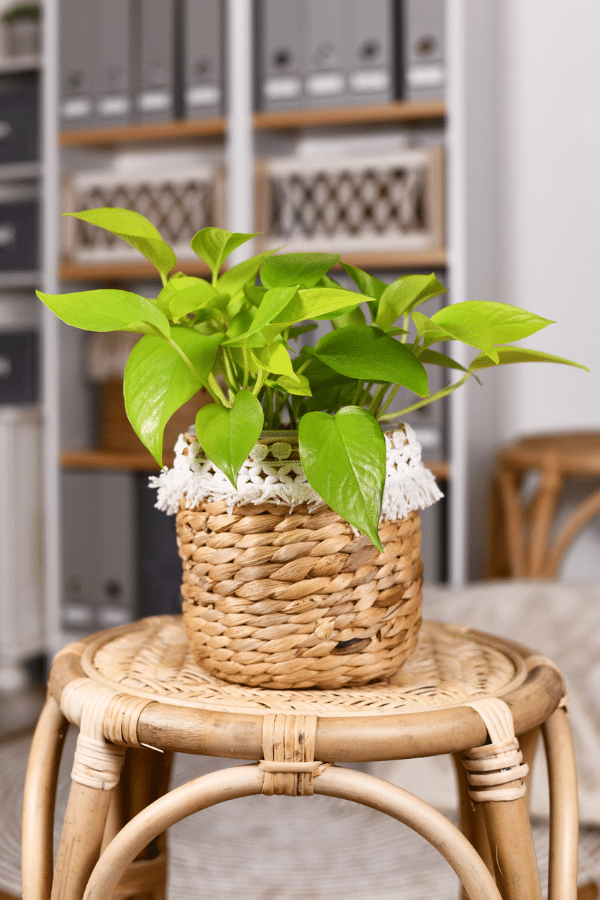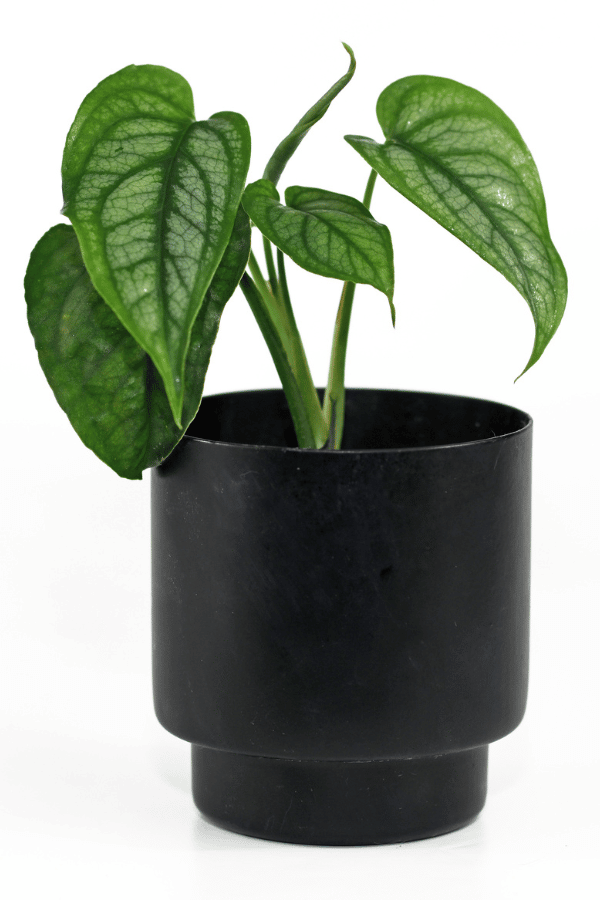Moth Orchid (Phalaenopsis)
Moth Orchid care is a rated as a medium care level. They are purchased with beautiful blooms that will eventually die off and for some, it can be hard to get them to bloom again. If you have successfully grown Phalaenopsis in the past or just want to enjoy their blooms, a Moth Orchid plant may be for you.
To give this Orchid plant the best care, it requires an Orchid soil mix, keep the plants soil moist, provide it with bright indirect sunlight, temperatures ranging from 60-85F, and average humidity levels.
Quick Care Overview
| Common Name | Moth Orchid |
| Scientific Name | Phalaenopsis |
| Family | Orchidaceae |
| Origin | Philippines & Australia |
| Growth Rate | Slow |
| Identification | Two large green petals and three colorful flowers |
| Height | Up to 20 inches tall |
| Soil | Orchid mix |
| Water | Keep soil moist |
| Temperature | 60-85F |
| Sunlight | Bright indirect sunlight |
| Toxic to Cats & Dogs | No |
| Toxic to Humans | No |
| Pests | Aphids, thrips, whitefly |
| Diseases | Root rot, leaf spot |
Below we will dive deep into this Moth Orchid care guide.
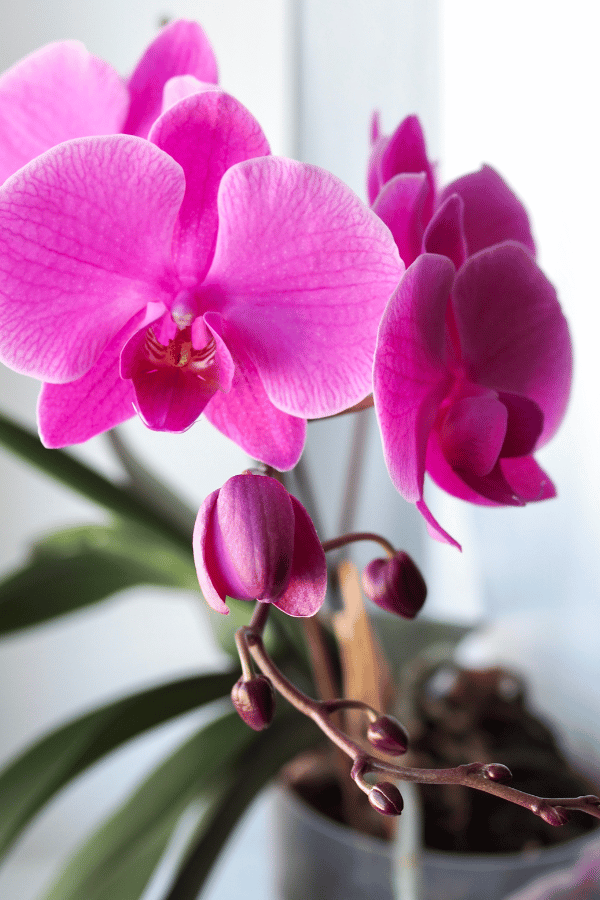
Moth Orchid History
The Moth Orchid, otherwise known as the Phalaenopsis Orchid, is a gorgeous colorful large orchid that has become a popular indoor plant. This orchid will bring an exotic touch to any room. Blooms will last several weeks, and many flowers may be produced at once. Blossoms may come in pink, white, purple, red, or white. The name Phalaenopsis means “like a kind of moth” in Greek, leading to the common name of this Orchid.
Moth Orchid Identification
Phalaenopsis Orchids may be identified by their two large petals and three oval sepals. Orchids are epiphytic plants with coarse roots that can absorb moisture from the air. Blooms are said to appear similar to fluttering moths.
Moth Orchid Growth Facts
According to fossil records, Phalaenopsis Orchids may have grown on earth for as many as 100 million years. If you give this orchid the proper care, it will bloom for months.
How Big Does a Moth Orchid Get?
Phalaenopsis Orchids may grow as tall as 20″.
Moth Orchid Care
You will be rewarded with gorgeous blooms if you provide your orchid with plenty of humidity, light, and warm temperatures.
Moth Orchid Soil
Moth Orchids do not require soil for successful growing. In fact, the best growing medium for a moth orchid is a light and airy soilless mix of sphagnum moss, perlite, and bark chips. You can also purchase orchid bark from a garden store, which will work well for Phalaenopsis. Make sure your container contains drainage holes or aeration holes.
Moth Orchid Fertilizer
It is best to fertilize your Orchid after they finish blooming until late fall with a diluted orchid fertilizer. Ensure that you follow all label instructions. Do not overfeed, as this may lead to damage from a chemical burn.
Moth Orchid Watering
Phalaenopsis Orchids should be kept considerably moist, as they are not drought resistant. However, ensure that you do not get the blooms or foliage of this plant wet, as this may encourage disease. Depending on growing conditions, your Moth Orchid will likely need to be watered weekly. Watering frequency may be reduced in winter and during blooming to once every two weeks.
Moth Orchid Light Requirements
Moth Orchids should be kept in bright indirect light, such as from an eastern or northern-facing window. However, do not expose this plant to bright, direct sunlight, which can cause leaf burn.
Moth Orchid Temperature & Humidity
The Moth Orchid will do best when kept in warm indoor temperatures, between 60-85 degrees Fahrenheit. However, this orchid will need to be exposed to temperatures below 60 degrees Fahrenheit for a few weeks to bloom. Humidity levels should ideally be around 50-60% to keep your Phalaenopsis orchid happy. Ensure that your plant has good air circulation to prevent issues. Installing a humidifier or using a pebble tray will help to keep your orchid happy.
Repotting Moth Orchid
Repotting of your Moth Orchid should be done every 1-2 years after booming when roots are seen poking out of its container. Select a container 1-2 inches larger than the previous container. Use a soilless growing mix indicated for orchids or your own mixture, cut away any browned roots, repot your plant, and keep moist.
Moth Orchid Maintenance & Pruning
Pruning should be completed annually during the orchid’s dormancy after blooms have been spent. Cut back the stems to one inch above the node using sharp, clean shears to encourage new growth. Remove any dead, diseased, or discouraged stems. Do not remove aerial roots that appear above the soil.

Moth Orchid Propagation
Home-growers may propagate Orchids through the baby plants produced by the Orchid, known as Keiki. Keiki’s appear on flower spikes and may be removed and planted after about a year of maturation. To propagate, select a Keiki with at least two leaves and some roots and remove using a sharp, clean blade. Next, plant the Keiki into its own container and keep it moist.
Moth Orchid Toxicity
Toxicity to Humans
While not considered toxic to humans, consumption of Moth Orchids may still cause adverse reactions in some individuals. Therefore, do not consume any portion of this plant.
Toxicity to Cats & Dogs
Luckily, the Moth Orchid is considered non-toxic to pets. However, it is best not to allow your cat or dog to consume this plant, as it may cause permanent damage to your plant and digestive upset to your plant.
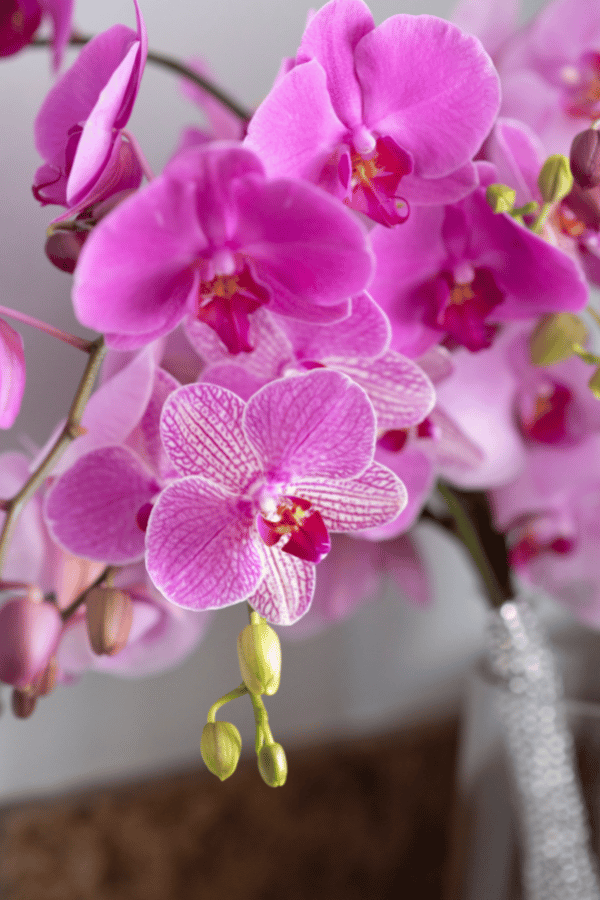
Moth Orchid Problems
Moth Orchid Leaves Turning Yellow
Yellowing foliage may be due to pests, disease, insufficient lighting, nutrient deficiency, or lack of sunlight.
Moth Orchid Leaves Turning Brown
The foliage of your Orchid may turn brown due to insufficient moisture or too much direct sunlight.
Moth Orchid Diseases
Phalaenopsis Orchids are susceptible to plant diseases such as leaf spot and root rot due to their high moisture requirements. Therefore, ensure that your Orchid has good air circulation. Upon identification of plant disease, isolate your plant, and treat it with a fungicide, such as copper.
Moth Orchid Pests
Moth Orchids may become susceptible to infestation from indoor houseplant pests such as aphids, thrips, whiteflies, and more. Check the Phalaenopsis leaves and stems regularly for bugs. Treat with insecticidal soap right away for 3-4 weeks if you see bugs.

